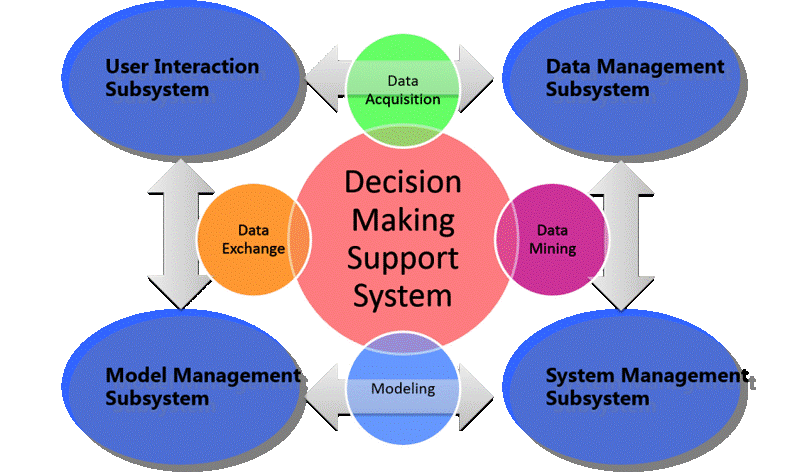In today’s fast-paced and ever-changing business landscape, decision-making is a critical aspect of organizational success. With the vast amount of data available, managers and executives often struggle to make informed decisions, especially when faced with complex and uncertain situations. This is where decision support tools come into play. These tools are designed to provide a structured approach to decision-making, enabling organizations to make better-informed decisions and drive business growth.

What are Decision Support Tools?
Decision support tools are computer-based systems that use data, models, and algorithms to support decision-making. They provide a framework for analyzing complex problems, evaluating alternatives, and selecting the best course of action. Decision support tools can be used in a wide range of applications, from strategic planning and resource allocation to operational management and risk assessment.
Types of Decision Support Tools
There are several types of decision support tools, including:
- Decision Trees: A decision tree is a graphical representation of a decision-making process. It consists of a series of nodes and branches, each representing a different decision or outcome.
- Swot Analysis: A SWOT analysis is a decision support tool that helps identify the strengths, weaknesses, opportunities, and threats associated with a particular decision or project.
- Sensitivity Analysis: Sensitivity analysis is a decision support tool that helps evaluate the impact of different variables on a decision or outcome.
- Simulation Models: Simulation models are decision support tools that use mathematical algorithms to simulate the behavior of complex systems.
- Expert Systems: Expert systems are decision support tools that use artificial intelligence and machine learning to mimic the decision-making ability of a human expert.
- Geographic Information Systems (GIS): GIS is a decision support tool that uses geographic data to support decision-making in areas such as urban planning, natural resource management, and emergency response.
Benefits of Decision Support Tools
The use of decision support tools offers several benefits, including:
- Improved Decision-Making: Decision support tools provide a structured approach to decision-making, enabling organizations to make better-informed decisions.
- Increased Efficiency: Decision support tools automate many of the tasks involved in decision-making, freeing up staff to focus on higher-value activities.
- Enhanced Collaboration: Decision support tools facilitate collaboration and communication among team members, ensuring that everyone is on the same page.
- Risk Reduction: Decision support tools help identify and mitigate risks, reducing the likelihood of adverse outcomes.
- Cost Savings: Decision support tools can help organizations reduce costs by identifying areas of inefficiency and optimizing resource allocation.
Real-World Applications of Decision Support Tools
Decision support tools have a wide range of applications in various industries, including:
- Healthcare: Decision support tools are used in healthcare to support clinical decision-making, disease diagnosis, and treatment planning.
- Finance: Decision support tools are used in finance to support investment decisions, risk management, and portfolio optimization.
- Marketing: Decision support tools are used in marketing to support customer segmentation, campaign optimization, and market research.
- Supply Chain Management: Decision support tools are used in supply chain management to support inventory optimization, logistics planning, and demand forecasting.
- Environmental Management: Decision support tools are used in environmental management to support natural resource management, climate change mitigation, and sustainability planning.
Challenges and Limitations of Decision Support Tools
While decision support tools offer many benefits, they also have some challenges and limitations, including:
- Data Quality: Decision support tools are only as good as the data they are based on. Poor data quality can lead to inaccurate or misleading results.
- Complexity: Decision support tools can be complex and difficult to use, requiring specialized training and expertise.
- Cost: Decision support tools can be expensive to develop and implement, especially for small and medium-sized organizations.
- Integration: Decision support tools may not integrate seamlessly with existing systems and processes, requiring additional investment in integration and customization.
FAQ
- What is the primary purpose of decision support tools?
The primary purpose of decision support tools is to provide a structured approach to decision-making, enabling organizations to make better-informed decisions. - What types of decision support tools are available?
There are several types of decision support tools, including decision trees, SWOT analysis, sensitivity analysis, simulation models, expert systems, and geographic information systems (GIS). - How can decision support tools improve decision-making?
Decision support tools can improve decision-making by providing a structured approach to decision-making, automating many of the tasks involved in decision-making, and facilitating collaboration and communication among team members. - What are the benefits of using decision support tools?
The benefits of using decision support tools include improved decision-making, increased efficiency, enhanced collaboration, risk reduction, and cost savings. - What are the challenges and limitations of decision support tools?
The challenges and limitations of decision support tools include data quality issues, complexity, cost, and integration challenges.
Conclusion
Decision support tools are powerful systems that can enhance decision-making in complex environments. By providing a structured approach to decision-making, automating tasks, and facilitating collaboration, decision support tools can help organizations make better-informed decisions and drive business growth. While there are challenges and limitations to using decision support tools, the benefits far outweigh the drawbacks. As technology continues to evolve, we can expect to see even more advanced decision support tools that can support decision-making in a wide range of applications. By leveraging decision support tools, organizations can gain a competitive edge, reduce risks, and achieve their goals.
Closure
Thus, we hope this article has provided valuable insights into Decision Support Tools: Enhancing Decision-Making in Complex Environments. We appreciate your attention to our article. See you in our next article!


